Tying the Two Handed Ligature, Pushing Technique
With the short end away from you. Hook your index finger between the ends. Grip the end with your thumb and push it through. Hook, grip, and push again. Tighten to make a Double Throw. Then hook your thumb between the ends. Grip the end again and push it through. Tighten to complete the Ligature Knot.
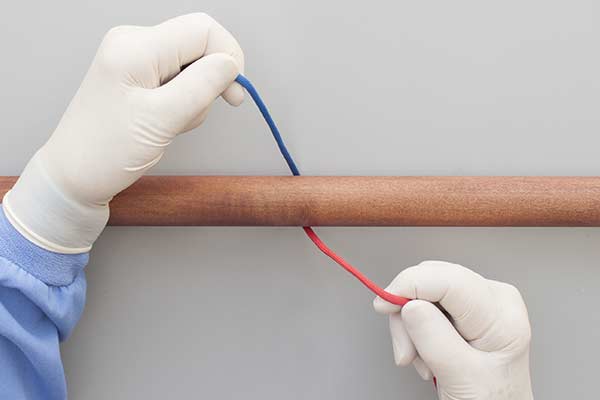
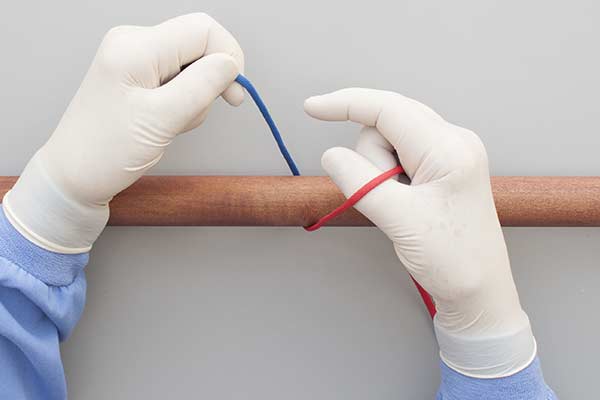
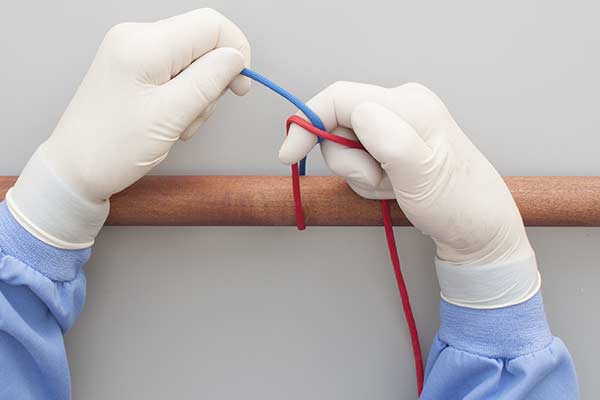
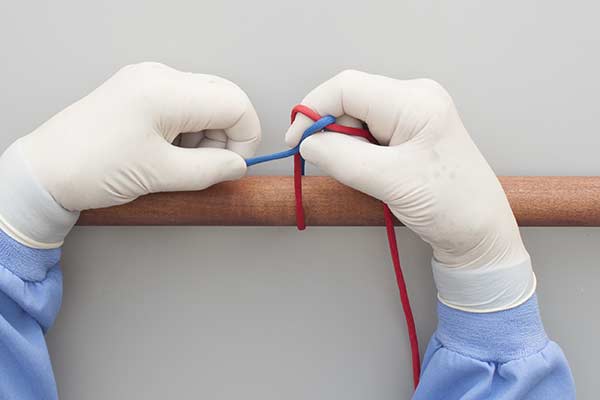
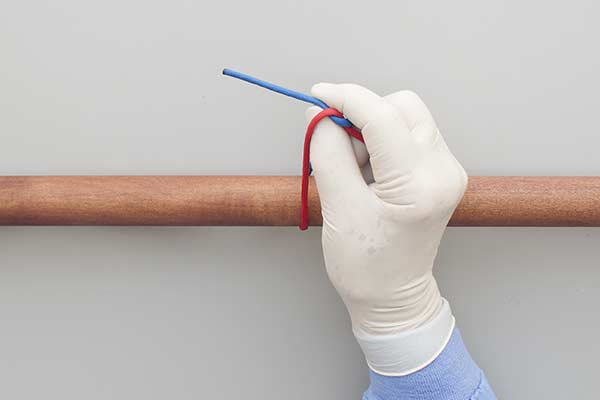
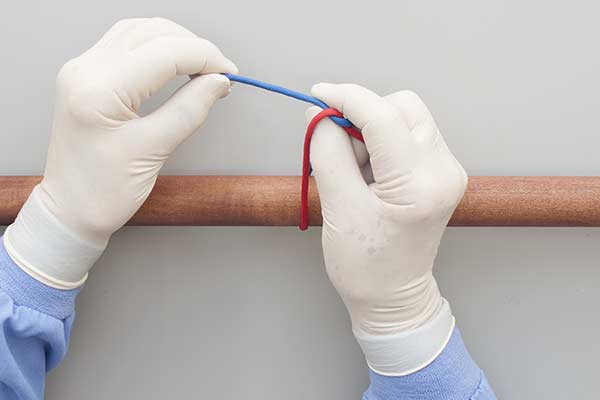
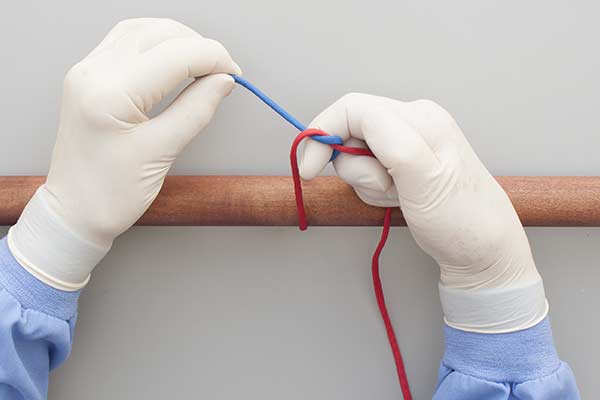
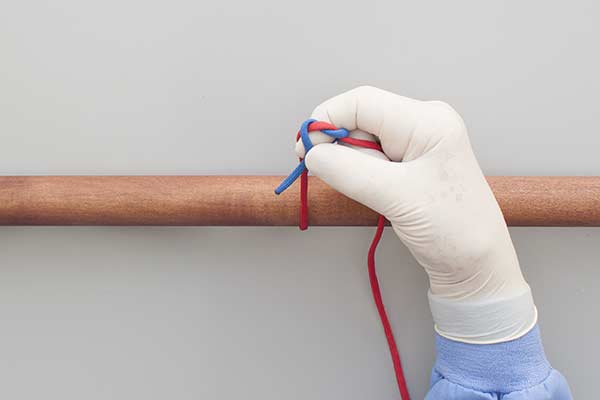
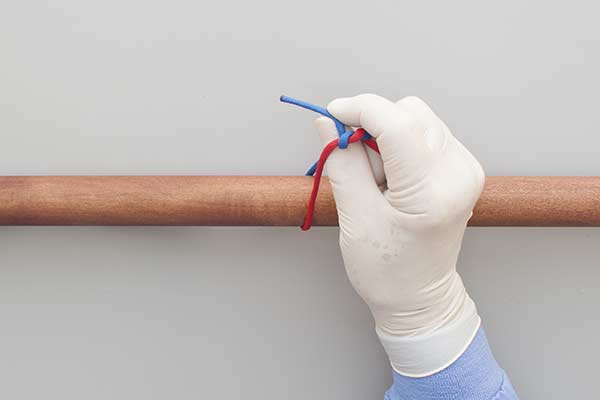

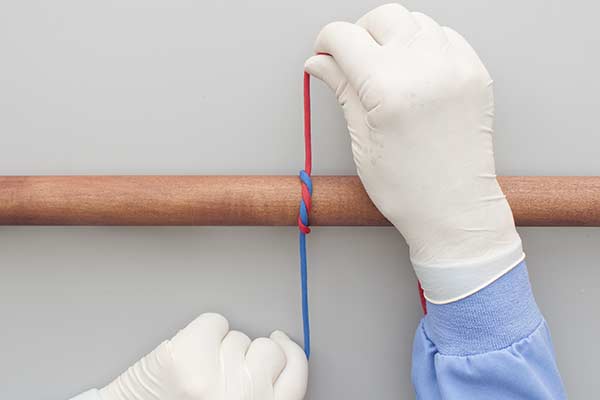
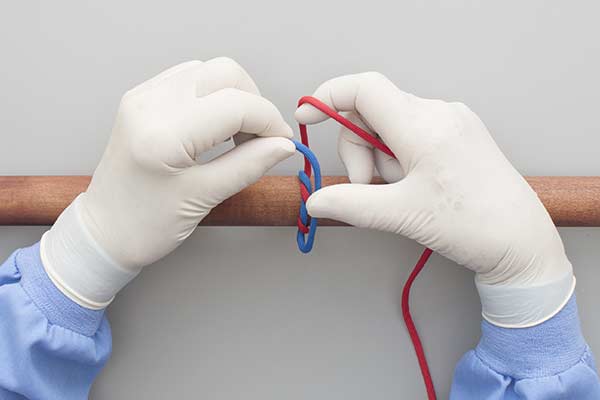




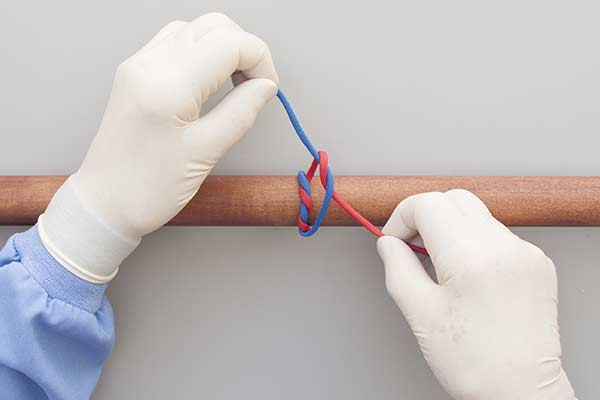

Two Handed Ligature, Pushing Technique
Uses: The Ligature Knot (ABOK # 1209, p 221) is widely used in surgery because the added throw in the first Half Knot makes it more secure than the Square Knot.
Better Alternative: Recent experiments compared several ligatures suitable for use in surgery. They convincingly demonstrated that the Constrictor Knot had the best properties and was far less prone to slipping.
Techniques: In the Two Hand technique the end of the suture is Pushed through to form the knot. Alternative techniques include the One Hand Technique and the Instrument Tie. As with the Surgical Tie correct technique should keep the ends taut during the tying process.
Learning and Teaching: Most right-handed students will prefer the Normal view and left-handed students the Mirror view. An Instructor sitting opposite a student may find it helpful to use the Inverted or Rotated views.
Variations: Some descriptions show additional steps for each part of this technique. For the first part, prior to using the finger as a hook, the thumb is inserted, then pressed against the finger, and the two are rotated into the position shown in frames 3 and 7. Likewise for the second half, the finger is first inserted, then pressed against the thumb, and the two are rotated into the position shown in frame 13. These are additional steps to learn and remember and provide little or no practical advantage.
Repetition: The sequence shown in the animation is usually completed with additional half knots to provide security. This precaution is appropriate because knots are unreliable and because the completed knot is often hard to see – it could comprise a stack of slippery Half Hitches instead of the intended Surgical Knot.
Reversing the Sequence: The animation shows the short end away the surgeon with the finger being used to make the first "hook". If the short end starts towards the surgeon then use frames 12 to 18 first with the thumb making the "hook" to start the first Half Knot; repeat that to make the second throw. Complete it with Frames 3 to 6 using the finger to make the second Half Knot.

